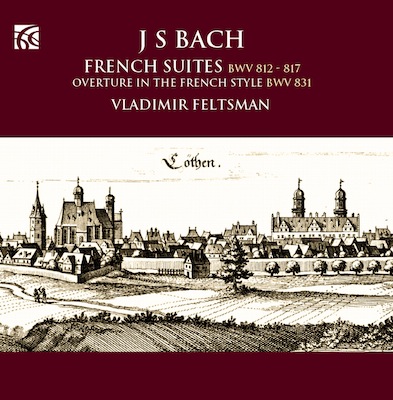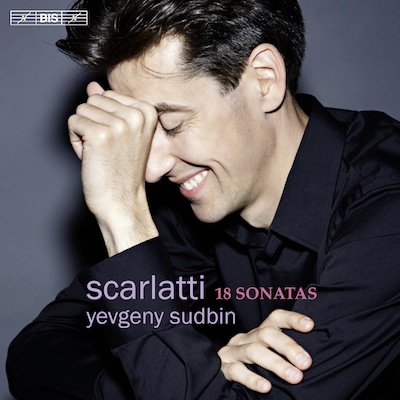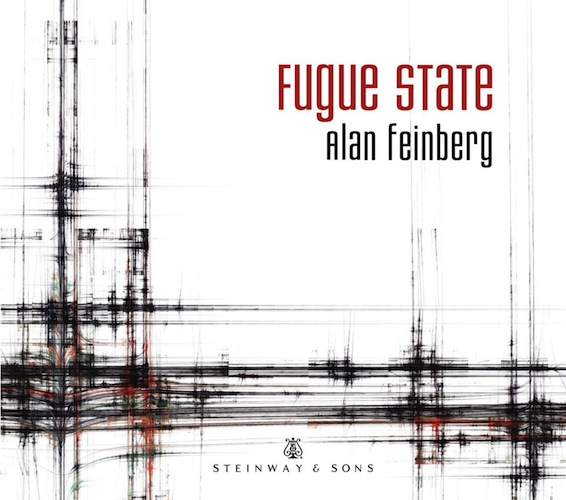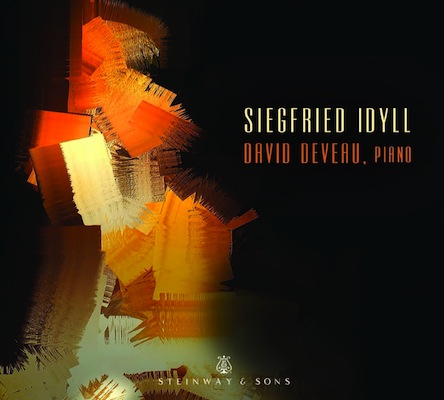
Category: Piano
Vladimir Feltsman: J.S. Bach, The French Suites

Vladimir Feltsman: J. S. Bach, The French Suites BWV 812-817; Overture in the French Style BWV 831.
Nimbus 2-CD set NI 6314
(No high-resolution download available, apparently.)
This wonderful 2-CD set will make a great gift for a friend who does not listen to a lot of classical music. That’s largely because the music is as accessible as it is beautiful. And while these recordings could serve as background music for other activities, they will also reward close attention during repeated hearings.
Vladimir Feltsman was born in the Soviet Union in 1952. He made his début with the Moscow Philharmonic at age 11. (Interestingly enough, his father Oscar was a composer of popular songs and musical comedies.) Unhappy with political interference in the arts, in 1979 Feltsman applied for an exit visa, the result being eight years of virtual artistic non-person-hood.
Arriving in the US in 1987, he was widely feted, starting at the White House. Today, Feltsman might be verging perilously close to “Elder Statesman” status, except that his playing exhibits youthful vitality and genuine enthusiasm, all without a trace of self-importance. Continue Reading →
Alexander Toradze: Shostakovich Piano Concertos 1 & 2

Alexander Toradze: Shostakovich Piano Concertos 1 & 2
Recorded June 2010 and August 2011, hr-Sendesaal, Frankfurt, Germany
CD Pan Classics PC 10261
(No high-resolution download available, apparently.)
Alexander Toradze, piano; Jürgen Ellensohn, trumpet in Piano Concerto No. 1; George Vatchnadze, piano in Concertino Op. 94; Frankfurt Radio Symphony Orchestra, Paavo Järvi, conductor.
In writing about Yevgeny Sudbin’s recent Scarlatti recording, I mentioned the Jungian Synchronicity that a few weeks before I downloaded the review copy of Sudbin’s recording, I had been engaged as a substitute to review for the Providence Journal a Rhode Island Philharmonic concert featuring Alexander Toradze playing Rachmaninoff’s Third Piano Concerto. Further, that for his encore, Maestro Toradze played the same Scarlatti “Aria” sonata that brings down the curtain on Sudbin’s program.
Yevgeny Sudbin: 18 Sonatas by Domenico Scarlatti (1685–1757)

Yevgeny Sudbin: 18 Sonatas by Domenico Scarlatti (1685–1757)
Sonatas K 417 in D minor; K 208 in A major; K 159 in C major; K 56 in C minor; K 213 in D minor; K 125 in G major; K 373 in G minor; K 119 in D major; K 69 in F minor; K 425 in G major; K 29 in D major; K 99 in C minor; K 12 in G minor; K 479 in D major; K 9 in D minor; K 318 in F sharp major; K 141 in D minor; and K 32 in D minor.
AUTOGRAPHED Compatible stereo + MCH SACD/CD BIS 2138; CDQ or 24/96 download, Classics Online.
Domenico Scarlatti wrote these sonatas for his patroness Maria Magdalena Barbara, the Infanta of Portugal.
Mitzi “married up,” later becoming the Queen of Spain. (No, her nickname was not “Mitzi;” so, don’t bother writing in. But please, do find a different reason to write in!) Maria Magdalena Barbara had a nearly-insatiable appetite for… keyboard sonatas. Scarlatti wrote more than 500 of them. Furthermore, Scarlatti wrote almost all of those sonatas for the harpsichord.
Therefore, it is an historical irony, one reflected upon by Yevgeny Sudbin in his truly excellent liner notes, that today, these works are most often associated with Russian pianists; Vladimir Horowitz being the prime example. Sudbin claims that Russian musical education uses Scarlatti’s keyboard music more than does any other country’s pedagogy; and, that well may be true. Ten years ago, Sudbin made his début (all-Scarlatti), recording for Sweden’s label BIS; it received rapturous reviews. Volume Two, so to speak, is his tenth-anniversary celebration.
The bottom line is, this recording is an absolute “must-buy” for piano lovers. (Historically-Informed Performance people, perhaps not so much.) Sound samples and more, after the jump. Continue Reading →
David Deveau: Siegfried Idyll
David Deveau: Siegfried Idyll
Piano music of Liszt, Wagner, and Brahms
Steinway & Sons CD 30051
This completely musical and unusually thoughtful recital program by David Deveau is not only a feast of pianistic tonal beauty and artistic phrasing. For my always-increasingly-meager shekels, of all the recent Steinway & Sons CD solo-piano releases, this is the one that most closely approximates my ideal of what a great piano recording should sound like.
So, audiophiles: please vote with your wallets by buying this CD!
Words about the performer, the program, and the recording venue (followed by some generous sound bites), all await you after the jump. Clickez-vous, s-v-p!
Alan Feinberg, pianist: “Fugue State”

Alan Feinberg is one of those increasingly rare classical pianists who have managed to create an international career without the springboard of a well-publicized competition win. (No knock on competition winners who play like artists—see here. )
Alan Feinberg came to my attention some years back when he recorded a series of four CDs for Argo, one of which included a spellbinding performance of a Fauré “Après un Rêve” transcription by Percy Grainger. Feinberg’s approach was larger than life. Or, perhaps it was more that Grainger’s “transcription” left Fauré’s pensive little art song in the dust of a major construction project.
Shen Lu, pianist: “Watercolor”

Shen Lu, Watercolor
Steinway & Sons CD 30039
I am very persnickety about piano recordings. Many piano recordings manage to leave me rather cold–both from a performance standpoint, and usually also from the sonic standpoint. Some of that I can trace to the facts that my early musical experiences were playing violin in student orchestras, and singing in school choruses.
Shaping a musical line and shading dynamics are existentially important in music. But the piano is unavoidably a percussion instrument.
Piano dynamics are a one-way street. Once you hit a note, it will die out as it will—there is no way to swell the sound once a note has started sounding on the piano. Whereas swelling a note is part of a singer’s stock in trade, and a violinist’s too.



